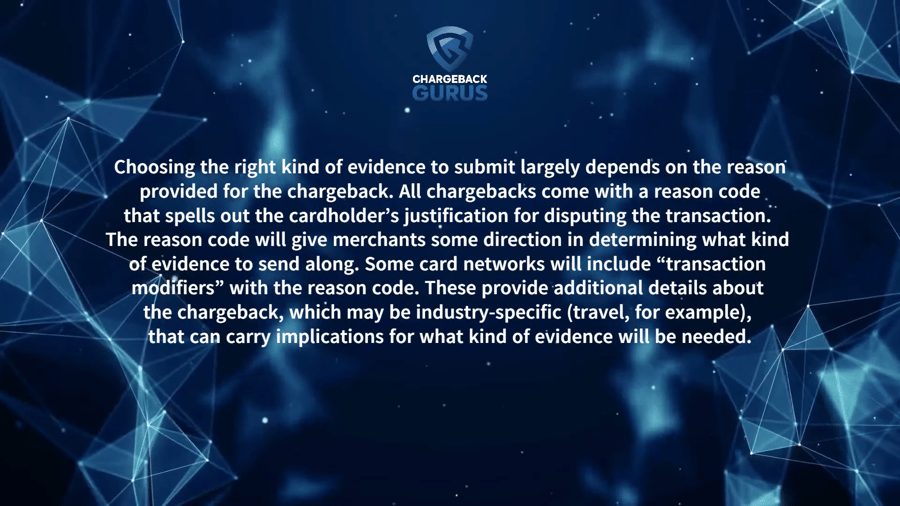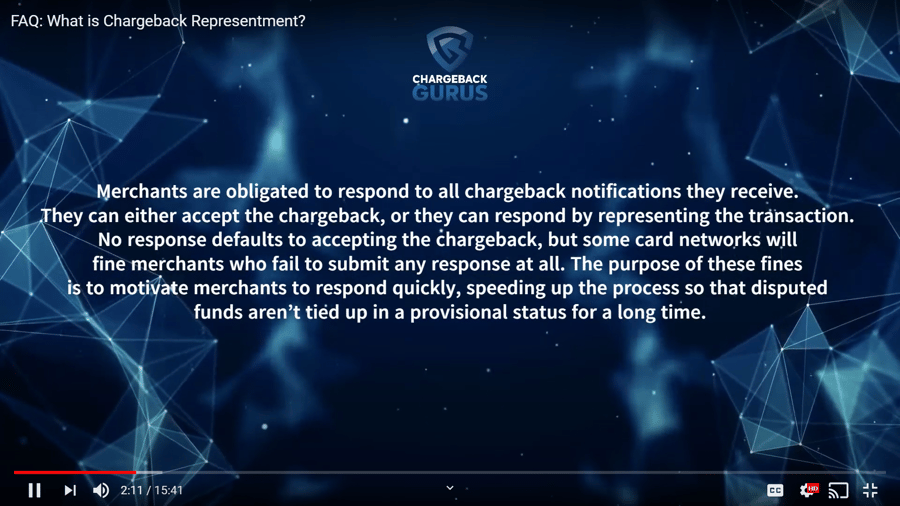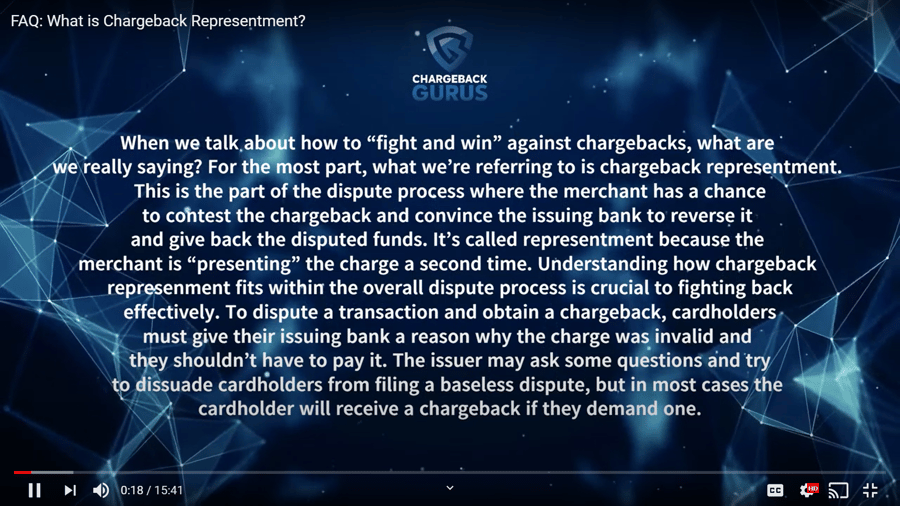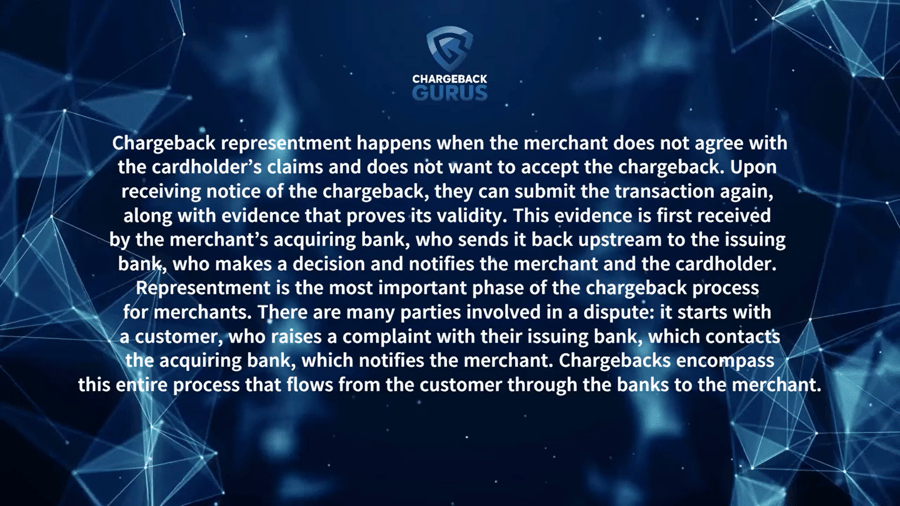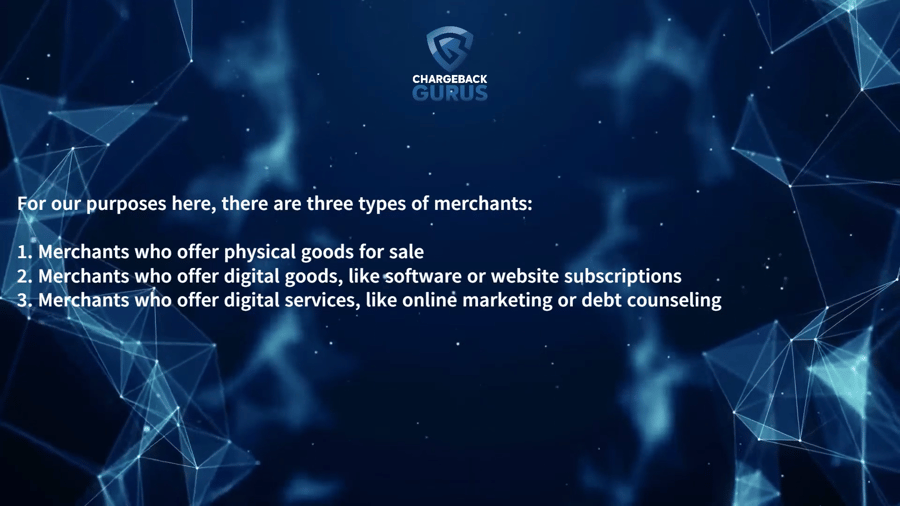What Is Chargeback Representment?
 FAQ: What is Chargeback Representment?
FAQ: What is Chargeback Representment?
 FAQ: Fraud Monitoring with TC40 and SAFE
FAQ: Fraud Monitoring with TC40 and SAFE
 Mandate: Visa Free Trial & Subscription
Mandate: Visa Free Trial & Subscription
 FAQ: What is a chargeback? How do I prevent them?
FAQ: What is a chargeback? How do I prevent them?
 FAQ: Visa Merchant Purchase Inquiry (VMPI)
FAQ: Visa Merchant Purchase Inquiry (VMPI)
 TIPS: How to Prevent Recurring Billing Chargebacks
TIPS: How to Prevent Recurring Billing Chargebacks
 FAQ: Chargeback Alerts - Guaranteed Prevention
FAQ: Chargeback Alerts - Guaranteed Prevention
Table of Contents
- What Is Chargeback Representment?
- What Happens if I Ignore Chargeback Notifications?
- Is Representment the Same for all Merchants?
- What Constitutes Compelling Evidence for Representment?
- What Are the Potential Outcomes of Chargeback Representment?
- What Are the Options for Handling Chargeback Representment?
- Why Fight Chargebacks?
- What Does a Chargeback Analyst Do?
- What Is Dispute Analysis?
Chargebacks are a complicated issue for many merchants. On the one hand, they can be a significant drain on revenue, often greater than merchants realize. On the other, fighting them successfully can be challenging. Many merchants choose to accept chargebacks as a cost of doing business, not realizing that they're leaving money on the table.
Fighting chargebacks—whether in-house or by outsourcing the job to a chargeback management company—is a valuable way to recover a significant portion of the revenue lost to them. It also provides information that can help identify the root causes of chargebacks and prevent future disputes from occurring. Let's talk about what chargeback representment is, what merchants need to know to win disputes, and what options are available for implementing a representment strategy.
What Is Chargeback Representment?
Most chargebacks begin with the cardholder contacting their bank to dispute a charge on their account. They give the reason they want to dispute the charge and sometimes any evidence they have to support their case. Banks will often ask if the cardholder has already attempted to work things out with the merchant directly, and encourage them to do so if they haven't, but cardholders will often claim to have already contacted the merchant just to move the process along.
In cases where the cardholder claims that fraud has occurred, the bank may use the tools at their disposal to gather any information that supports the fraud claim and add that to the evidence. This investigation often happens before the merchant has any knowledge of a potential chargeback in the works.
 If the cardholder's claim matches one of the approved reasons for which a chargeback may be filed, the bank will typically issue a credit to the cardholder's account for the amount of the transaction and file a chargeback through the appropriate card network. If the cardholder's claim does not fall under any of the approved reasons, the bank will let them know they have to work things out with the merchant directly.
If the cardholder's claim matches one of the approved reasons for which a chargeback may be filed, the bank will typically issue a credit to the cardholder's account for the amount of the transaction and file a chargeback through the appropriate card network. If the cardholder's claim does not fall under any of the approved reasons, the bank will let them know they have to work things out with the merchant directly.
There are some circumstances that may constitute more of a gray area. In these cases, banks will usually err on the side of the cardholder and grant the chargeback.
After the chargeback is filed, the money is debited from the merchant's bank. The merchant is also assessed a chargeback fee and the chargeback is recorded with their processor and the card network, increasing their chargeback ratio. Even if the merchant fights the chargeback and wins, the fee will not be refunded, nor will the chargeback be taken off their record.
At this point, the merchant has two options. They can accept the chargeback and end things there, or they fight the chargeback through representment. To do so, the merchant must create a representment package that includes a rebuttal letter summarizing their case and compelling evidence to support it. The representment package is sent to the merchant's acquirer, which then submits it to the issuing bank.
The issuing bank will examine the evidence and decide whether or not the merchant has sufficiently proved their case. The card networks have established some guidelines for this process, but the decision is largely left up to the bank. If the evidence is deemed satisfactory, the chargeback will be reversed. The transaction amount will be returned to the merchant, but the chargeback fee will not be refunded.
Representment is the most important phase of the chargeback process for merchants. There are many parties involved in a dispute: It starts with a customer, who raises a complaint with their issuing bank, which contacts the acquiring bank, which notifies the merchant. Chargebacks encompass this entire process that flows from the customer through the banks to the merchant.
What Happens if I Ignore Chargeback Notifications?
The purpose of these fines is to motivate merchants to respond quickly, speeding up the process so that disputed funds aren’t tied up in provisional status for a long time.
When the merchant accepts the chargeback, the cardholder keeps the funds and the matter is settled. The merchant loses the disputed amount and the goods the cardholder purchased.
The card networks keep pushing for faster, more streamlined dispute phases. Visa, for example, updated its chargeback rules in 2018 and imposed a 30-day time limit for merchants to respond to a dispute.
Keep in mind that representment is not a tug-of-war between the merchant and the cardholder until one of them gives up. The merchant must submit compelling evidence along with the representment, and if either party wishes to contest the matter beyond this point, the dispute process moves into an entirely new phase that may ultimately lead to arbitration from the card network.
Is Representment the Same for all Merchants?
The right kind of compelling evidence to submit will vary not only depending on the reason code for the chargeback, but also depending on the type of merchant.
- Merchants who offer physical goods
- Merchants who offer digital goods, like software or website subscriptions
- Merchants who offer services, like marketing or debt counseling
It also makes a difference whether the transaction in question was a one-time purchase or a recurring charge. Each type of merchant has different forms of evidence to gather and present when fighting a chargeback, but some evidence is applicable in every situation.
What Constitutes Compelling Evidence for Representment?
Some card networks will include “transaction modifiers” with the reason code. These provide additional details about the chargeback, which may be industry-specific (travel, for example), that can carry implications for what kind of evidence will be needed.
Merchants must provide a transaction record that shows that the AVS and CVV information they collected matches the customer's payment credentials. Some issuers and card networks will reject a representment package right off the bat if the merchant can’t establish that they did their basic due diligence when the transaction was initially processed. This alone can sometimes be sufficient to win against claims that the card was used without proper authorization, and information from other anti-fraud and identity verification tools will make victory even more likely.
 It's also a good idea to provide a copy of the sales terms and conditions, highlighting or excerpting the relevant parts. If customers have to check a box indicating that they understand and agree to abide by them when they place their order, include a record of that too.
It's also a good idea to provide a copy of the sales terms and conditions, highlighting or excerpting the relevant parts. If customers have to check a box indicating that they understand and agree to abide by them when they place their order, include a record of that too.
Copies of communications between the merchant and the customer may be relevant as well if they show that the merchant was in the process of making a good faith effort to resolve whatever problems the customer was having. You may also need to provide copies of receipts or invoices, especially if they contain special requests or instructions from the customer that are related to the chargeback reason.
It can also be helpful to provide the customer’s past order history, if that exists, to show that the customer previously had no issue with similar or identical purchases.
With respect to the three merchant types mentioned earlier, here are our specific documentation recommendations:
Physical Goods
Physical goods merchants should provide an invoice that describes what product was purchased, when and how it was shipped (with tracking information included), any refunds issued, and copies of any interactions between the customer and the merchant.
Digital Goods
Digital goods merchants should provide documentation such as invoices, IP logs, internal data, social media postings, or anything else that proves the customer made use of the software or subscription they purchased. On chargebacks against a recurring charge, it can be helpful to attach receipts for previous payments that the customer did not dispute to demonstrate that they accepted these charges in the past.
Services
Services merchants may have a hard time furnishing proof that their services were actually used by a customer who initiated a chargeback. For these merchants, it's important to obtain a written agreement, either physically or electronically signed, before providing service to a customer. Other than that, the best evidence is relevant documentation such as invoices, social media postings related to the receipt of your services, IP logs, etc.
Less-common types of chargebacks may require highly specific forms of evidence. For example, if an international customer claims they were overcharged because an unfavorable exchange rate was used, you may need to provide proof that they agreed to dynamic currency conversion.
Note that not all dispute packages are the same. Your evidence should specifically address the reason the customer provided for the chargeback.
In addition, different banks may have different preferences and standards for what constitutes compelling evidence. Chargeback management companies often work directly with banks over millions of chargebacks. They get to know what banks are looking for and what they consider compelling.
Note that this doesn't mean you're massaging data to fit your chargeback representment. It means that you're putting together your information in a way that speaks to the bank's interests and the reason code of the chargeback.
What Are the Potential Outcomes of Chargeback Representment?
The bank will typically notify the payment processor first, and the merchant can find out the outcome through the payment processor’s online portal or by contacting them directly.
If the bank decides in favor of the cardholder, they keep their provisional credit for the disputed funds, and the merchant is out the funds, product, and fees. If they decide in the merchant’s favor, the funds are returned to the merchant account and the cardholder loses their provisional credit. Either way, this brings the representment phase of the dispute process to a close.
However, representment is not always the end of the story.
Customers and banks can pursue the chargeback further, to the pre-arbitration stage. Your options at this point are to accept the loss or to present new evidence to try to convince the issuing bank. If the issuing bank is unconvinced, however, they may escalate the case to arbitration by the card network.
Whoever loses the case pays the fees for arbitration, which will typically be several hundred dollars.
Note that Visa decides liability for some disputes automatically. If liability is assigned to the merchant, they can respond with a representment package as usual, but this will be considered pre-arbitration. If the issuer doesn't accept liability upon examining the evidence, your only recourse would be to initiate arbitration themselves.
If your representment packages frequently fail to reverse chargebacks, it may be an indicator that you're not submitting the right evidence. It may also mean that you're fighting chargebacks you can’t win. Chargebacks that result from true fraud and those caused by merchant errors usually won't be reversed.. It’s better for merchants to accept chargebacks that they know to be valid and only invest time and effort into fighting “friendly fraud” chargebacks, where the cardholder is being dishonest.
What Are the Options for Handling Chargeback Representment?
Accept All Chargebacks
This may be the best approach if you receive chargebacks very infrequently, but for merchants who regularly deal with chargebacks, accepting them as a cost of doing business often means a significant loss of revenue.
It also means you won't have access to wealth of data that can be obtained by fighting chargebacks. This data can be used to improve fraud protection and reduce chargebacks organically.
Fight Chargebacks In-House
This approach reduces security concerns, but it can be difficult for in-house staff to keep up with all of the policy changes banks and card networks make to the chargeback process.
In-house teams also tend to have a much lower win rate than third-party professionals. Part of this is due to the difficulty of obtaining true expertise in chargeback management. Another factor is the difference made by the advanced AI tools that chargeback management companies have access to.
Hire a Chargeback Management Company
The right company will have knowledge of your industry along with the tools and resources to effectively fight chargebacks and identify their root causes. They can be available 24/7 and can provide useful suggestions, reporting, and insights that can help you identify your vulnerabilities and incur fewer chargebacks.
They can also be expensive, and the wrong company can drain your money while providing little benefit. Research has shown, however, that most chargeback management companies are far more successful in representment than in-house teams.
Whether you opt to deal with chargebacks on your own or hire an outside company, it is to your benefit to understand exactly how representment works. As part of any sale, you should be documenting and recording the information you will need to submit as compelling evidence if the sale later turns into a chargeback. You should know the deadlines for responding to chargebacks, the right forms of evidence to submit for your specific business and the industry you’re in, and the meanings of any reason codes and transaction modifiers that might be applicable to you.
Why Fight Chargebacks?
It also allows friendly fraudsters to get away with theft by deception, giving them positive reinforcement to repeat this harmful practice.
It’s also true that ineffective chargeback representment—in other words, submitting the wrong kind of evidence, or fighting unwinnable chargebacks—can do more harm than good. If your chargeback management team or vendor is wasting resources fighting chargebacks they can't win or submitting bad evidence, you might not see the positive ROI that effective chargeback management can bring.
The secret to maintaining a winning record against friendly fraud and other beatable chargebacks is to know what kind of evidence to submit, how to craft a persuasive rebuttal letter, and when to accept a valid chargeback. To really protect yourself, you need effective representment procedures in place, along with proactive measures to prevent the chargebacks that can’t be fought.
FAQ
What Does a Chargeback Analyst Do?
What Is Dispute Analysis?
Thanks for following the Chargeback Gurus blog. Feel free to submit topic suggestions, questions or requests for advice to: win@chargebackgurus.com





